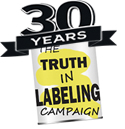DATA

Epidemiological Studies Tell Us that MSG Places Humans At Risk
In 1969, Schaumburg et al. determined that approximately 30% of the US population suffered adverse reactions when fed monosodium glutamate in an ordinary diet (1). Reif-Lehrer (2) and Kenney et al. (3) confirmed their findings. Kerr et al. (4), in a 1979 glutamate industry sponsored study, found that 43 per cent of respondents reported one or more unpleasant symptoms associated with eating, but concluded that only 1.8% of the population might be sensitive to monosodium glutamate. To accomplish this, Kerr et al. decreed that the only true symptoms of monosodium glutamate sensitivity (called "Chinese restaurant syndrome") were "burning, tightness, and numbness" experienced simultaneously, that commenced between 10 minutes and 2 hours after the start of a meal, and lasted 4 hours or less.The fact that an additional 41.2 per cent of the subjects reacted with chest pain, dizziness, headache, palpitation, weakness, nausea/vomiting, abdominal cramps, chills, diarrhea, heartburn, unusual thirst, unusual perspiration, flushing sensation in face or chest, and tingling was ignored; while migraine headache, seizures, tachycardia, hives, skin rash, and depression, were not offered as options, and were not considered.
REFERENCES
1.Schaumburg HH, Byck R, Gerstl R, Mashman JH. Monosodium L-glutamate: its pharmacology and role in the Chinese restaurant syndrome. Science 1969;163:826-8.2.Reif-Lehrer LA. Questionnaire study of the prevalence of chinese restaurant syndrome. Fed Proc 1977;36:1617-23.
3. Kenney RA, Tidball CS. Human susceptibility to oral monosodium L-glutamate. Am J Clin Nutr 1972;25:140-6.
4. Kerr GR, Wu-Lee M, El-Lozy M, McGandy R, Stare F. Food-symptomatology questionnaires: risks of demand-bias questions and population-biased surveys. In: Filer LJ Jr, Garattini S, Kare MR, Reynolds WA, Wurtman RJ, eds. Glutamic Acid: Advances in Biochemistry and Physiology. New York: Raven Press, 1979.

